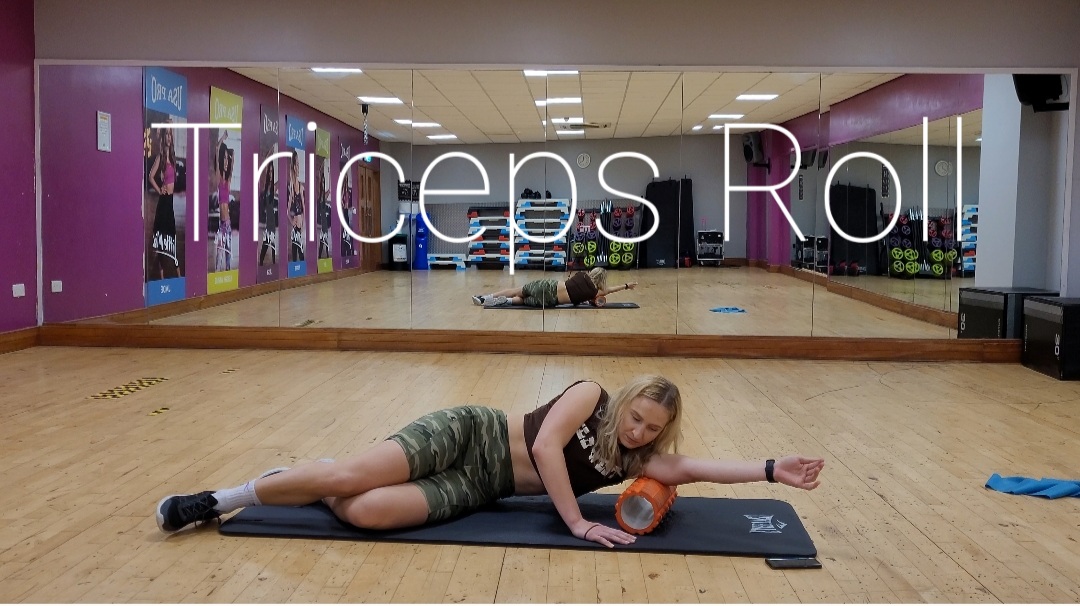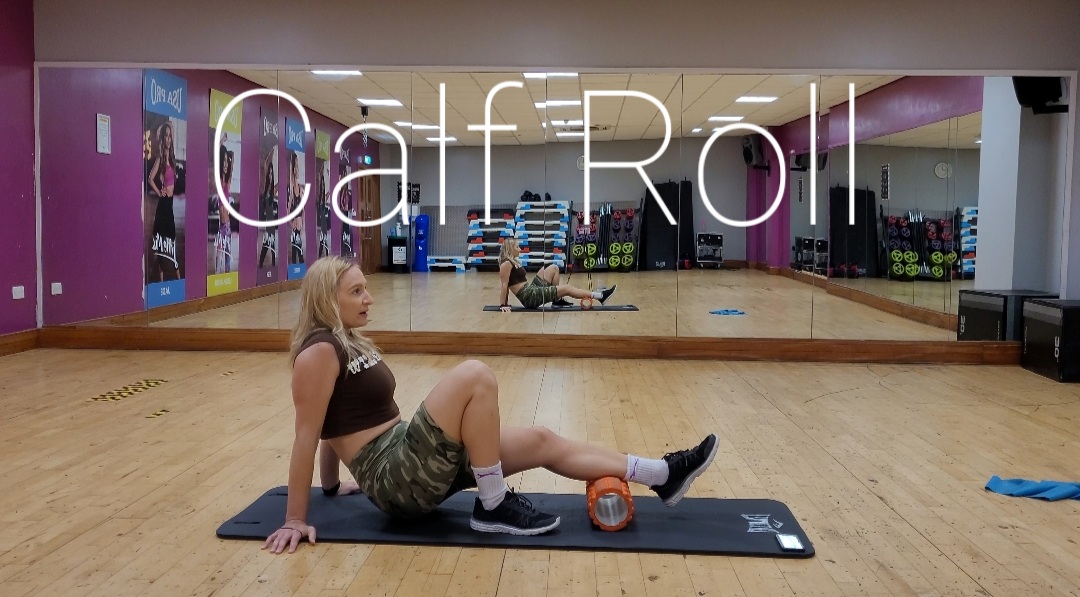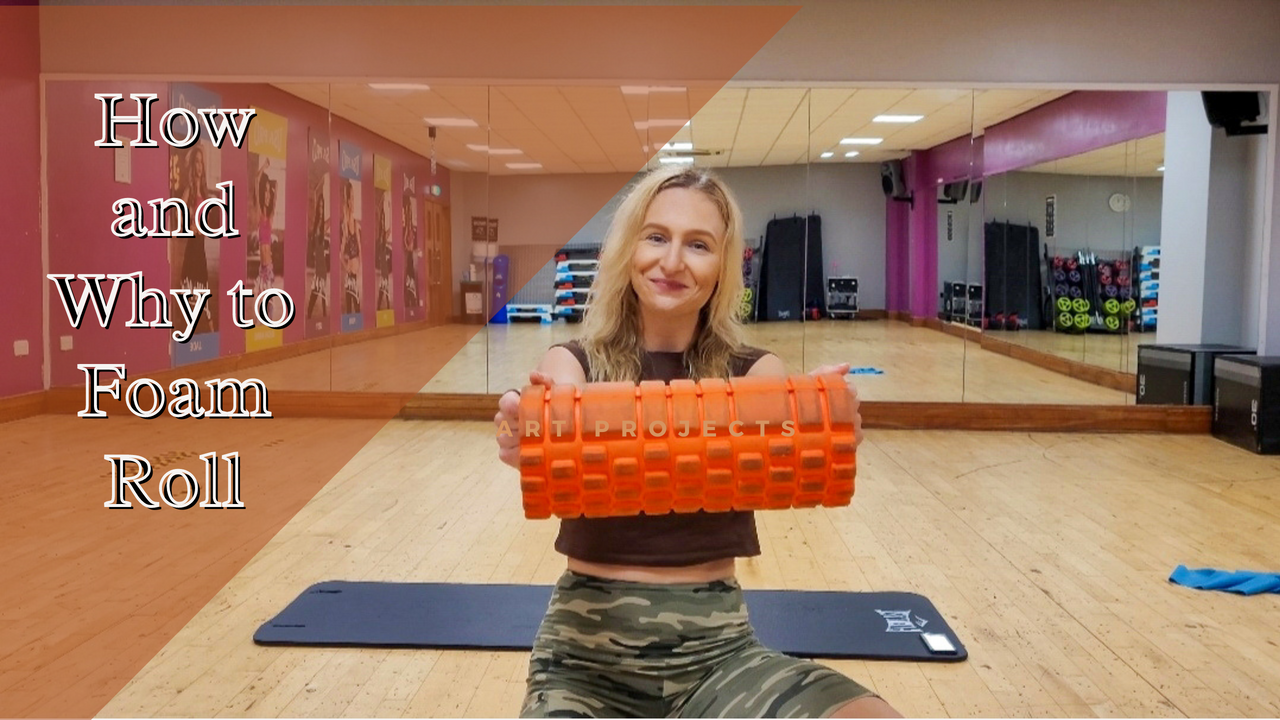Do you know why it’s essential to foam roll before or after exercise?
Learn the benefits of foam rolling, and it’s techniques to maximize its impact on your muscle health. I’ll walk you through what foam rolling does, when to foam roll and the proper way to roll on major muscle groups. Get ready to elevate your workout routine and improve your recovery!
What is a foam roller?
The foam roller is a fantastic in-hand self-massage tool that creates pressure over multiple muscle groups and smashes tissues.
It helps release tension, improves flexibility in tight or overworked muscles, reduces muscle soreness, and improves recovery after exercise. Foam rolling, therefore, can enhance athletic performance and reduce the risk of injury.
Foam Roller Types
Foam rollers come in different sizes to accommodate various areas of the body. They can be smooth (gentler) or have teeth (deep massage) that can effectively release muscle knots. In contrast, different colours target different levels of muscle tension. The white ones usually are softer, while the darker ones are dense.
If you are new to foam rolling, invest in one of the smooth, softer ones, as it can be painful. When you feel a change in your tissues (less pain), upgrade to a hard, black-colored foam roll.
- Long foam (90-115 cm)
Best for a more even message for larger muscle groups or broader areas such as the legs (quads, hamstrings), back (lats, thoracic back), and glutes. I also use these for scapular mobilization, as it is easy to lie flat on it with the spine in a safe position.
- Short foam rolls (30-45cm)
Best for smaller muscle groups, such as the arms (triceps) calf and upper back. They can get knots or tight areas easier than a bigger foam roller.
- Lacrosse ball/ soft-tissue ball
I know this is a ball, not a foam roller, but it jumps into this category, right? This is much smaller and firmer, allowing for a more targeted and intense massage. It is great to release trigger points or knots with more accuracy. As the pressure is deeper is more suitable for those with a higher tolerance. You can also target smaller areas like the feet, hips, neck, and lower back.
- Housing tools to foam roll
Believe it or not, you do not even have to buy a foam roller. You can just use a tennis ball or even a bottle or anything that you may find suitable to release those tense muscles.
Now that you know what you can use for your recovery, let’s see how to do it.
How to Foam roll major muscle groups:
Quadriceps (Front Thighs)

Position the foam roll underneath the front thigh. You can start from the knee or the top of the Quad closer to the hip.
Drop on your elbows and use your arms for support. You can also put one leg out to the side for extra security. This will reduce the pressure on the muscles. Slowly start rolling up on your thigh towards your hip, looking for tender points/areas. Spend extra time on these spots. Once the pain eases, move on.
You can also flex the leg, contract the muscle, and release.
Continue until you feel the difference or 1-minute total work.
Glutes (buttock )

Position the foam roller underneath the glutes (sit on it). Lean back and use your hands to support yourself. Place one foot over the other side of the knee (as shown on the picture). Then slightly rotate your hip towards that side. Slowly roll back and forth over the foam roller, focusing on the glutes and the tender points.
You can also manipulate those muscles and the surrounding tissues by rotating and moving your body on the roller side to side. Do it until you feel the difference or one minute total work on each side.
Triceps Roll

Position the foam roller in/under your armpit near the insertion of your lat and rotator cuff. Aim more towards the backside of your shoulder.
Keep putting pressure on the foam roller with your weight. Wave back and forth across your lat and your shoulder. You can move from the triceps down to your lats. Also, you can shift your weight side by side on the roller to create wave pressure. Spend the extra time and attention on the tight spots.
Do one minute of soft-tissue release on each arm!
Calf roll

Place one leg straight on the foam roll while the other is on the ground, bent for support. Have your arms behind you for assistance.
Start from the top of the Achilles. Then, start rolling up towards your knee. You can target a different part of the calves by rotating your legs. You can also flex and relax your calf for intensity.
Complete one minute total rolling on each side.
When and How often should you Foam Roll?
Foam rolling can be part of a warm-up and cool-down routine, depending on the individual’s needs and goals.
When used as a warm-up, foam rolling can help increase circulation, improve the range of motion, prepare the muscles for physical activity, and reduce the risk of injury. While doing it as part of your cool-down routine helps to reduce muscle soreness, improve recovery time, promote proper muscle function, and prevent muscle imbalances from developing. Therefore, you can complete it both at the beginning and the end of your workout.
The frequency of foam rolling depends on your activity level, muscle tightness, tolerance and injury history. Here are some advise:
- If you engage in regular activity, you can foam roll before and/or after your workout, daily or several times a week, depending on your tolerance and muscle tightness..
- If you are less active with a deskbound job, foam rolling can still be beneficial, especially if you feel tight. You can foam roll a few times a week or as needed to alleviate discomfort and improve mobility.
- If you have recently suffered an injury or undergone surgery, foam rolling should only be done under the guidance of a professional. They will be able to provide specific guidelines on frequency and technique, based on your individual needs and recovery.
Should It HURT?
The discomfort you experience while foam rolling can result from the pressure you apply on the tissue (avoid rolling over joints and bones, as this can cause injury and pain.) This can occasionally be tender, sore, or knotted. However, it shouldn’t be extremely painful! You should feel the benefit of it rather than screaming in pain!
If the pain is intense or unbearable, reduce the pressure. If this doesn’t make it better, I recommend consulting with a doctor to rule out any injuries that may be more serious.
For full video on Foam Rolling Please CLICK HERE!

